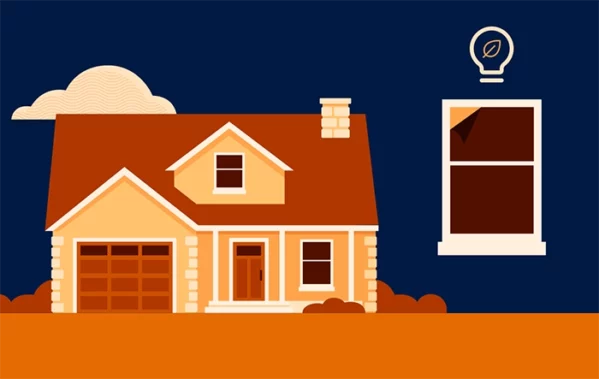Economic and industry news or trends
The Construction Beat: OSHA encourages masks again, housing starts fall and Congress aims to pass infrastructure bills
Don’t dig for construction headlines. We’ve done the work for you.
We at Buildertrend know the industry moves fast – and want to help you keep up. Because we also know a more informed construction team is a more successful and inspired one. That’s why we deliver the most newsworthy updates, all in one place. With “The Construction Beat,” check out what’s been happening around the industry – and why it matters to you.
This week, we’ve got updates for you on job site mask guidance, where the trillion-dollar infrastructure bills are headed and a drop in housing starts.
Even vaccinated workers should mask up, OSHA says
The Occupational Safety and Health Administration has issued new guidance recommending that many vaccinated workers wear masks on the job. This strays from the workplace safety agency’s guidance from several months ago stating that fully vaccinated workers no longer had to wear masks. The rise of the Delta variant prompted OSHA to backtrack in an effort to protect people who are unvaccinated or immunocompromised in hot spot locations.
The guidance identifies several high-risk settings where workers have close contact with other people, but it does not include construction. Further, it is worth noting that this recent guidance is merely a recommendation and not a requirement for employers to implement. But builders located in COVID-19 hot spots such as Texas, Florida and the Carolinas may consider following the guidance by requiring vaccinated employees to wear masks, particularly on job sites where the client is present (like a remodel). For full transparency, builders should speak with their client to establish the mask-wearing expectations of their workers prior to beginning the job.
Pelosi: House aims to pass infrastructure bills by October
House Speaker Nancy Pelosi announced the House aims to pass both recent infrastructure bills by Oct. 1. Both bills received Senate approval earlier this month. If passed by the House, which Democrats narrowly control with a 220-212 edge over Republicans, the bills then go to President Biden’s desk for approval.
The first of the two bills will use approximately $1 trillion to support new infrastructure projects. The bill was a hot topic in summer headlines as President Biden was adamant that he wanted the bill to have bipartisan support, which it eventually received. The bill includes substantial allocations for infrastructure and, if passed by the House and signed by the president, will create many new federal jobs and contracts for construction companies. The $1 trillion funding comes primarily from leftover funds from 2020’s various COVID relief bills.
The second bill lacks bipartisan support as Democrats, including Pelosi, remain uncompromising on the bill’s price tag: $3.5 trillion. The bill itself lacks much, if anything, affecting construction. Instead, the bill includes funding for programs such as child care, home health care and paid family and medical leave. The Biden administration and Pelosi reaffirmed the $3.5 trillion price will be funded by tax increases to corporations and wealthy individuals.
Home starts fall but demand remains strong
From June to July of this year, housing starts fell 7% in the United States, according to the Census Bureau. Housing starts dropped from June’s 1.65 million units to July’s 1.534 million units. Interestingly, despite the significant drop, single-family starts remain almost 12% higher than last year at this time – indicating that demand is still strong.
The reasons for the recent drop amid relatively high consumer demand are two-fold. First, as we’ve reported in past renditions of “The Construction Beat,” prices for building materials remain high. For example, though the overall price of lumber has decreased dramatically since May, builders have yet to see the effects of such decreases because suppliers continue to charge the higher May prices until their margins stabilize. This effectively resulted in higher building costs for otherwise would-be buyers, pricing some out of the market.
Second, labor shortages continue to impact industries across the United States, particularly construction. The construction industry has struggled for years to attract younger talent with the median age of construction worker being 41. To add further hardship to an industry already struggling to attract talent, builders continue to struggle to fill open jobs due to the availability of unemployment benefits. Even states where unemployment benefits were cut off in early summer continue struggling to find enough labor.
Until building prices cool and builders can address the labor shortage, home starts may continue to decrease.
Don’t miss out on construction news
Be sure to follow us on Instagram, Facebook, Twitter and LinkedIn to see when “The Construction Beat” delivers more of the latest, need-to-know headlines. For additional business resources and tips, check out our resource library of articles, customer success stories and podcast episodes.
Staying on top of construction news is all about staying on top of what’s best for your business. Let Buildertrend help.

Bathroom design trends in 2024
With life being so fast-paced, bathroom designs are embracing the concept of personal sanctuaries. Here are the latest bathroom design trends for 2024.

How window tinting can increase energy efficiency in new builds
Here are five reasons why home window tinting is becoming an increasingly popular choice for and energy-conscious enhancement on new builds.

The 2024 housing market outlook
In this 2024 construction industry update, Buildertrend’s in-house expert shares insight into the lock-in effect, interest rates and the labor shortage.
Want to contribute to our blog?
We believe in building a community for construction – sharing is a big part of that. If you have industry expertise or a story to tell, your voice can reach thousands here.

